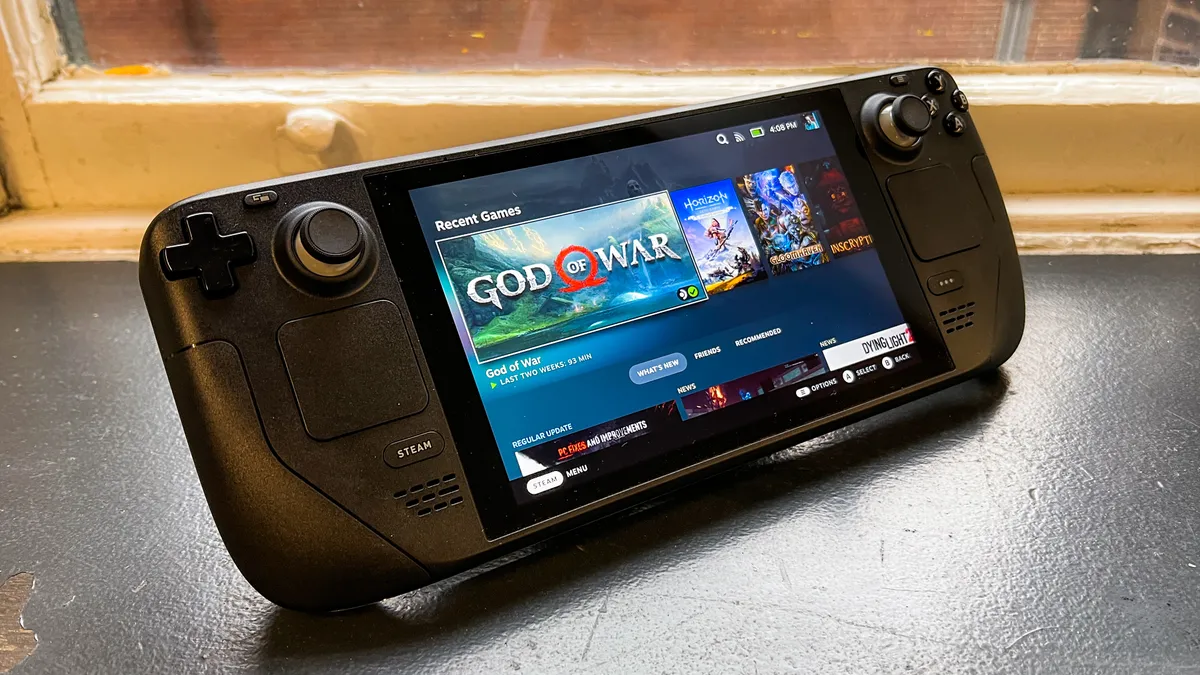Table of Contents
ToggleSteam Deck 2: Features, Performance Upgrades, and What to Expect
The Steam Deck 2 is one of the most highly anticipated releases in the handheld gaming space. Following the success of Valve’s original Steam Deck, users have been eager for an updated version that pushes portable PC gaming even further. While Valve has remained relatively quiet about official details, reliable leaks, developer interviews, and hardware trends give us a strong idea of what the Steam Deck 2 might bring to the table.
In this article, we explore potential features, hardware changes, display upgrades, and the broader impact this next-gen device could have on mobile gaming.
What Is the Steam Deck?
The original Steam Deck is a portable gaming device developed by Valve. It allows users to play PC games from their Steam library while on the go. With its Linux-based SteamOS and full PC compatibility, it provides a versatile experience unmatched by traditional consoles.
The Steam Deck 2 is expected to build on this foundation, enhancing performance, usability, and display quality to meet modern gaming demands.
Anticipated Hardware Upgrades
One of the most expected changes with the Steam Deck 2 is improved performance. Gamers want smoother framerates, better thermal management, and longer battery life.
Likely Chipset Advancements
Valve may partner again with AMD to deliver a custom APU built on newer architecture. A more efficient CPU and GPU would allow the device to run demanding games at higher settings without overheating or draining the battery too quickly.
Expanded RAM and Storage
While the original model offered up to 512GB of storage and 16GB RAM, the next iteration may introduce faster LPDDR5 memory and larger SSD options, potentially up to 1TB or more.
Display Improvements Expected
The screen is a vital part of the handheld experience, and the Steam Deck 2 could receive several upgrades in this department.
Higher Refresh Rates
While the original display featured a 60Hz refresh rate, newer portable devices are now offering 90Hz or 120Hz. Valve might follow suit to ensure smoother gameplay, especially for competitive titles.
Better Color and Brightness
An OLED or Mini-LED panel could offer richer colors and deeper contrast. Combined with increased brightness, this would enhance outdoor visibility and cinematic experiences.
Ergonomic and Design Refinements
Though the first Steam Deck was generally well received, users noted that it felt bulky during long sessions. Valve could make small ergonomic adjustments to improve comfort.
Slimmer Form Factor
A slightly thinner and lighter design is possible without sacrificing battery capacity, thanks to more efficient components.
Improved Button Feedback
Feedback on the trackpads and triggers could lead to more tactile inputs, making the device feel more responsive and polished overall.
Software Integration and SteamOS Upgrades
The Steam Deck 2 will run on an updated version of SteamOS, likely featuring:
-
Faster boot times
-
Improved compatibility with non-Steam games
-
Enhanced controller customization
-
Better battery optimization
Valve has shown a commitment to open-source development, so users can also expect community-driven improvements and continued Linux support.
Backward Compatibility and Accessory Support
One major benefit of Valve’s ecosystem is backward compatibility. The Steam Deck 2 is expected to support:
-
All existing Steam games
-
Older Deck-compatible accessories (such as docks and cases)
-
External displays and controllers through USB-C and Bluetooth
This seamless continuity will make upgrading far easier for current users.
Battery Life Enhancements
Battery life was one of the most common complaints with the original model. Valve is likely to address this with:
-
More efficient chips
-
Dynamic performance scaling
-
Smarter fan control
-
Optional low-power modes for indie or 2D games
These improvements could result in noticeably longer play sessions, especially during cloud gaming or media playback.
Frequently Asked Questions
Will Steam Deck 2 support ray tracing?
If it features a newer AMD APU with RDNA 3 architecture, it may support hardware-accelerated ray tracing for compatible games.
Can I upgrade from the original Steam Deck easily?
Yes. Since both versions will use the same SteamOS environment, syncing your library, settings, and cloud saves should be seamless.
Is the Steam Deck 2 just for gaming?
No. Like the original, it will likely function as a full PC, allowing you to browse the web, use productivity tools, or even install Windows.
Will my current games run better on the Steam Deck 2?
Definitely. With enhanced hardware and better cooling, performance in CPU- and GPU-intensive games will noticeably improve.
Is it worth waiting for Steam Deck 2?
If you haven’t purchased a Steam Deck yet and prefer higher-end features like a better screen or longer battery life, the Steam Deck 2 will likely offer more value long-term.
Final Thoughts
The Steam Deck 2 promises to be more than just a hardware refresh. It represents Valve’s continued investment in making portable PC gaming more powerful, accessible, and immersive. With likely improvements across performance, display quality, design, and battery life, it has the potential to set a new standard for handheld gaming.
Whether you’re already part of the Steam Deck community or waiting for your first device, the upcoming release is shaping up to be a compelling step forward in the evolution of gaming on the go.
